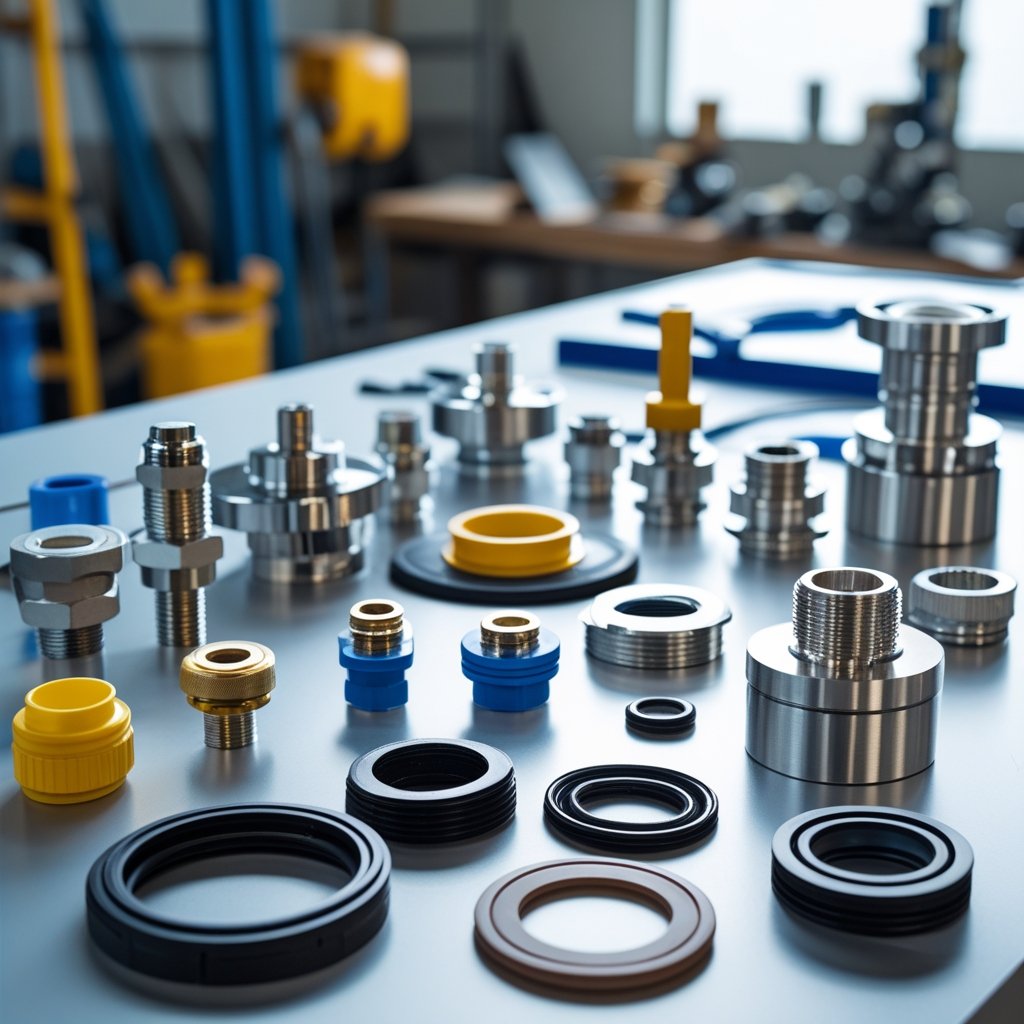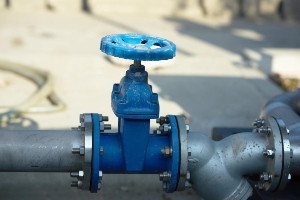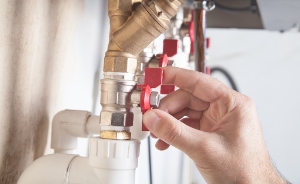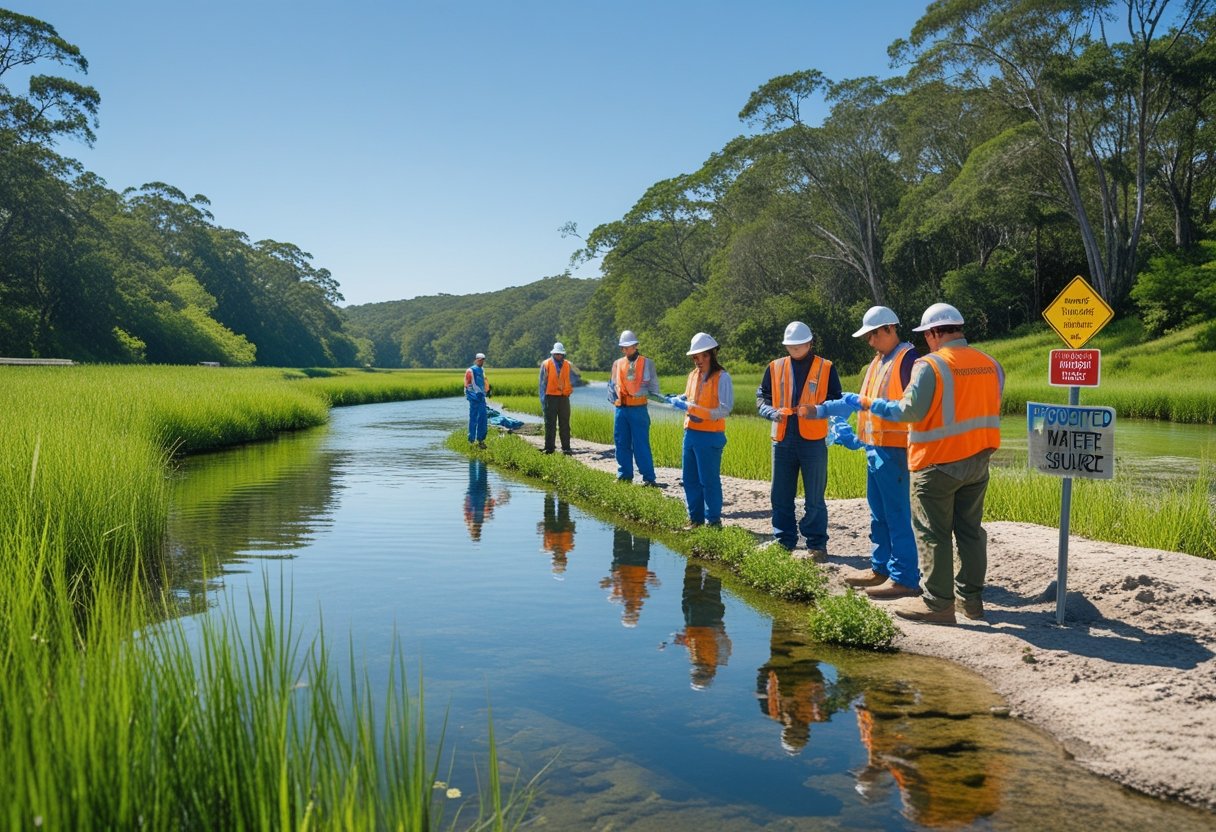If your backflow preventer isn’t working right, it might be time to replace some parts. Replacing worn or damaged parts like valves, seals, or springs keeps your water supply safe and prevents costly plumbing damage.
These repairs stop dirty water from flowing back into your clean water lines. You might wonder what tools and skills you need for this job.
Having the right tools and knowing how to remove and replace parts is important to avoid causing more problems. When you get professional help, your backflow preventer will work properly again.
Regular testing helps you catch issues early before they turn into big problems. If you notice leaks, low water pressure, or water discoloration, you should check your backflow system.
Knowing when to act can protect your home and keep your water safe.
What Is Backflow and Why Repair Matters
Backflow happens when water flows backward in your pipes. This can bring dirty water into your clean water supply.
Fixing backflow issues quickly protects your health and keeps your water system working well.
Understanding Backflow Issues
Backflow is the unwanted reverse flow of water, usually caused by changes in water pressure. For example, when pressure drops suddenly, dirty water can flow back through your pipes.
This can happen with lawn sprinklers, hoses, or even inside your home plumbing. A device called a backflow preventer stops this backward flow.
If it’s broken or worn out, water can flow in the wrong direction. Fixing or replacing backflow parts keeps your water safe.
Health and Safety Implications
Backflow can let dirt, chemicals, and bacteria get into your drinking water. This risks your family’s health by exposing them to harmful substances.
If you don’t repair backflow, it can cause illnesses or make water unsafe to use. Poor backflow repair can also lead to leaks and water pressure problems.
Repairing backflow systems keeps your water clean and your plumbing safe.
Signs You Need Backflow Repair
Look for these signs to catch backflow issues early:
- Leaks or drips around the backflow device
- Water discoloration or change in taste
- Drop in water pressure during use
- Warning or failure messages from annual tests
If you notice any of these, get your backflow preventer tested or repaired. Regular maintenance prevents bigger problems and keeps your water safe.
Common Backflow Repair Parts
When you need to fix a backflow preventer, several key parts often need attention. These parts work together to keep your water safe and prevent contamination.
Knowing about these parts can help you understand the repairs.
Valves and Valve Assemblies
Valves control the direction of water flow and stop water from flowing backward. Valve assemblies include one or more valves working as a unit inside your backflow preventer.
If a valve leaks or breaks, dirty water can mix with clean water. Common issues include worn valve seats or damaged valve discs, which cause leaks or reduced water pressure.
Replacing valves often needs special tools and matching parts. You may also need to clean out debris blocking the valve.
Seals and Gaskets
Seals and gaskets prevent leaks by making tight connections between different parts. Over time, they can wear out or crack from water pressure and environmental conditions.
When seals or gaskets fail, you might see water leaking around your backflow preventer or a drop in water pressure. Replace these parts quickly to avoid bigger problems.
These parts are usually made of rubber or similar materials. You can find replacement kits in different sizes for many backflow preventer models.
Springs and O-Rings
Springs provide the force needed to close valves properly. If springs become weak or broken, valves may not seal right, causing backflow problems.
O-rings help create tight seals inside valves and other small parts. Like seals and gaskets, O-rings wear out from age or damage.
Replacing worn springs and O-rings keeps your backflow device working well and helps avoid leaks or contamination. These parts are small but crucial.
Test Cocks and Kits
Test cocks are small valves used during backflow testing. They let technicians check pressure and see if the device is working.
Sometimes, test cocks get clogged, leak, or break, which affects testing accuracy. Repair kits include test cocks and tools to clean or replace them.
Using the right test kits helps your backflow preventer pass safety checks and keeps water flowing clean. Regular testing with working test cocks is important for maintenance.
Backflow Parts Replacement Service Process
When your backflow preventer needs repair, the process focuses on finding the problem, removing the worn parts, and putting in new ones. Each step helps keep your water safe and the system running smoothly.
Initial Inspection
First, you or a technician will check the backflow device to find out what’s wrong. This means looking for leaks, broken valves, or worn-out seals.
Sometimes, testing water flow helps spot issues like back-pressure or back-siphonage. Tools like wrenches and seal pullers help access inner parts without causing damage.
Knowing which component is failing saves time and ensures the repair is done right.
Removing Damaged Components
Once you find the problem parts, remove them carefully. This keeps the rest of the device intact.
Commonly replaced parts include check valves, seals, springs, and gaskets. Using the right tools helps protect other parts of your backflow assembly.
Clear out old parts completely and clean the area to remove dirt or corrosion.
Installing Replacement Parts
After removal, install new parts that fit your backflow preventer’s model and size. Use parts that meet safety standards to keep your water system working well.
Each piece needs to fit correctly and be tight enough to avoid leaks but not so tight that it damages seals. After installation, test the backflow device to confirm it works and stops water from flowing backward.
Choosing a Backflow Repair Service
Pick the right backflow repair service by looking at their skills, what past clients say, and the guarantees they offer. These factors help make sure your backflow system gets fixed safely and correctly.
Certifications and Experience
Hire a service with certified technicians who know the rules and standards for backflow prevention in your area. Certifications show they have the right training.
Experience matters too. A company that has worked on many backflow systems can spot issues faster and fix them efficiently.
Ask how long they’ve been servicing backflow preventers and if they keep up with the latest repair methods. Make sure your chosen service follows local laws and water safety codes.
Customer Reviews
Reading reviews gives you a sense of how reliable a backflow repair service is. Look for comments about their response time, professionalism, and quality of work.
Positive feedback on repairs or replacements can reassure you that the service delivers as promised. Be careful if you see repeated complaints about missed appointments, poor repairs, or unclear pricing.
Ask friends or neighbors if they’ve used a trustworthy service. Real experiences from people you know can help you decide.
Service Guarantees
Check a company's guarantees to protect your investment. A good backflow repair service often offers warranties on parts and labor.
Guarantees show the service stands behind their work and uses quality parts. Ask about the length of the warranty and what it covers.
See if they offer ongoing maintenance or follow-up checks. This can keep your backflow preventer working well for years.
Preventive Maintenance for Backflow Devices
Keeping your backflow device in good condition helps protect your water supply and avoid costly repairs. Check your device regularly and replace worn parts before they cause problems.
This makes sure your system works well and meets all safety rules.
Routine Testing and Inspection
Have your backflow device tested at least once a year. This helps catch leaks, blockages, or damaged parts early.
Professionals use special tools to check if the device stops water from flowing backward. During inspection, technicians look for leaks, worn valves, and debris buildup.
They may clean parts or recommend repairs if something isn’t working right. Testing also ensures your device meets local plumbing codes.
Keep a record of tests to track when maintenance is due.
Proactive Part Replacement
Many parts in backflow devices, like rubber seals and springs, wear out after 3-5 years. These pieces are key to stopping water from flowing backward.
When they fail, your device can leak or lose pressure control. Replacing parts before they break saves you from emergency repairs.
Common parts to watch are diaphragms, check valves, and seals. A professional can assess which parts need replacement during routine service.
They use quality, approved parts that fit your device. You can also create a schedule to swap out critical parts regularly.
This avoids failure and keeps your water supply safe.
Cost Factors in Backflow Repair Parts Replacement
Knowing what affects the price of backflow repair parts replacement can help you plan your budget. Costs depend on the work involved, the type of device, and the service package you choose.
Labor and Material Costs
Labor costs are a big part of what you’ll pay. The time a plumber spends fixing or replacing parts impacts the total price.
If your backflow device needs many parts replaced or difficult repairs, expect higher labor charges. Materials also add to the cost.
Some parts, like valves or springs, may be more expensive depending on quality or brand. Sometimes, older backflow preventers need hard-to-find parts, raising the cost.
Ask if the price includes both labor and materials. Knowing this upfront avoids surprise charges.
Device Complexity
Backflow devices vary in design. Simpler models cost less to repair because they have fewer parts and are easier to access.
Complex or commercial devices can be costly due to extra components and tougher installation. Your location can add to the cost if special permits or equipment are required.
If your system has unique plumbing setups, repairs may take longer and cost more. Check the type and age of your backflow preventer before the service.
This gives you a clearer idea of potential costs.
Service Packages
Many plumbers offer different service packages for backflow repair. Basic packages might include inspection and simple fixes, while full packages cover detailed testing and complete part replacement.
Some companies bundle repair services with annual testing. This approach can save money if you need regular backflow maintenance.
Compare what each service package includes and their prices. Choose the right package for your repair needs and budget.
Benefits of Timely Backflow Repairs
Taking care of your backflow preventer as soon as issues arise helps keep your water safe, avoids bigger costs, and keeps you in line with the rules.
Fixing problems early prevents failures that can cause serious trouble for your home or business.
Protecting Water Quality
Your backflow preventer stops dirty water from flowing back into your clean water supply. If it leaks or breaks, contaminated water can mix with drinking water and create health risks.
By repairing parts like valves and springs right away, you stop this from happening. Regular maintenance keeps your water fresh and safe for you and your family.
Small problems, like debris buildup or worn rubber parts, can quietly reduce the device’s ability to seal properly. Fixing these issues early keeps contaminants out and your water clean.
Avoiding Costly Damage
Ignoring minor backflow problems can lead to bigger failures. Leaking valves or broken parts may cause water damage inside your plumbing system.
If your backflow preventer breaks completely, you might face expensive repairs or full replacements. These costs can be much higher than simple part replacements done early.
Timely repairs also reduce the chance of water contamination. Water contamination could lead to health department warnings or panic shutdowns that might disrupt your operations or daily life.
Meeting Local Regulations
Many areas require you to have a working backflow preventer and to test it yearly. These rules protect public water supplies.
If you don’t repair or maintain your device properly, you may fail inspections. This can bring fines or orders to fix problems immediately.
Certified plumbers can guide you on regulations. They perform repairs that meet local codes.
Contacting Professional Backflow Repair Specialists
If your backflow preventer leaks or isn’t working properly, call a professional. These experts have the right tools and experience to fix or replace damaged parts safely.
A specialist will inspect your device carefully. They check for broken valves, worn seals, or debris buildup.
This helps them decide if you need a repair or a full replacement.
Benefits of working with professionals include:
- Certified repair work to meet local rules
- Use of proper tools to avoid damage
- Quick and reliable service
- Advice on maintenance and testing
You can schedule yearly inspections with them. Regular testing helps catch issues before they cause bigger problems.
Look for companies with experience and good reviews. Choose someone who knows how to keep your water safe and your system compliant.
If you notice leaks or changes in water flow, act quickly. Contacting a specialist soon can save you from costly damage and health risks.
Frequently Asked Questions
Knowing the exact parts you need and where to find them makes backflow repair easier. You also want clear instructions and reliable suppliers to avoid delays and extra costs.
How can I identify the specific parts I need for my backflow preventer repair?
Check your backflow preventer model and serial number. Look for worn or damaged components like seals, springs, or check valves.
Inspect for leaks or broken parts to know what needs replacing.
Where can I find a repair kit for a Watts backflow preventer?
You can find Watts backflow repair kits at plumbing supply stores or specialized retailers. Some online stores also sell these kits.
Can I purchase backflow repair parts from any home improvement stores?
Not all home improvement stores carry backflow repair parts. Visit plumbing supply stores or firms that specialize in backflow prevention parts to ensure the right fit.
Are there diagrams available to guide me through replacing parts in a backflow preventer?
Many backflow preventer manufacturers provide diagrams or manuals. You can usually find these on their websites or included with repair kits.
What should I look for when choosing a supplier for backflow repair components?
Choose suppliers with a good reputation, certified parts, and clear return policies. Local availability and customer support can also save you time during repairs.
Is it possible to get American backflow parts shipped to my location?
Yes, many suppliers ship American-made backflow parts nationwide.
Ask your chosen supplier about shipping options and delivery times for your area.











